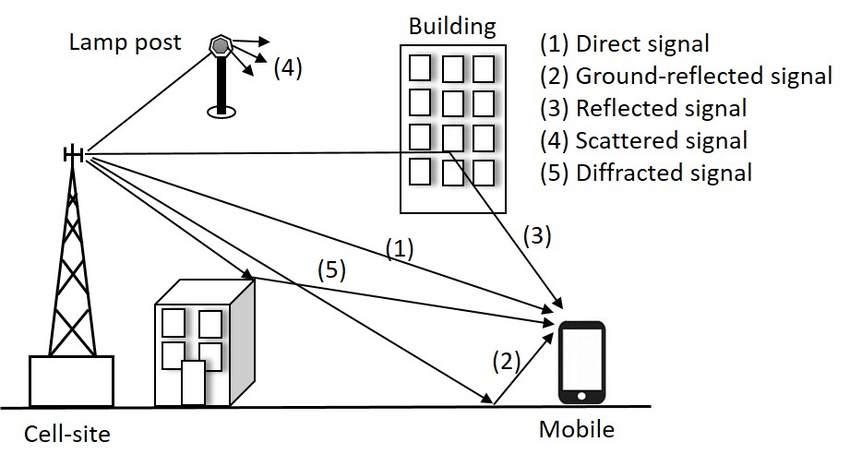Cyclic Codes in Wireless Communication: Enhancing Signal Reliability
Wireless communication has become a cornerstone of modern connectivity, enabling seamless interaction across various devices and networks. However, the inherent challenges of signal degradation, interference, and noise pose significant threats to the reliability of data transmission. Cyclic codes, a type of linear block code, have emerged as a powerful tool for enhancing signal reliability in wireless communication systems. This article explores the principles of cyclic codes, their implementation in wireless communication, and their benefits in ensuring robust data transmission.
Understanding Cyclic Codes
Cyclic codes are a class of error-correcting codes characterized by their unique property: any cyclic shift of a codeword is also a valid codeword. This property makes cyclic codes particularly suitable for scenarios where data is transmitted over noisy channels.
Key Features of Cyclic Codes:
- Generator Polynomial: The codewords are generated from a polynomial, known as the generator polynomial, which is derived from the parameters of the code.
- Error Detection and Correction: Cyclic codes allow for efficient error detection and correction by leveraging polynomial arithmetic over finite fields.
- Minimum Distance: The minimum distance of a cyclic code determines its error-correcting capability, influencing how many errors can be reliably corrected.
The Role of Cyclic Codes in Wireless Communication
In wireless communication, data is transmitted over radio waves, making it susceptible to interference from various sources, such as environmental noise, fading, and multi-path propagation. Here’s how cyclic codes enhance signal reliability:
1. Error Correction
Cyclic codes provide robust error correction capabilities, which is crucial in wireless communication. By detecting and correcting errors in transmitted data, these codes ensure that the receiver can accurately reconstruct the original message, even in the presence of noise.
Implementation:
- Encoding: Data is encoded using a generator polynomial to create a codeword before transmission.
- Decoding: At the receiver, the received signal undergoes syndrome calculation. If discrepancies are detected, the system uses error correction algorithms to retrieve the original data.
2. Improved Signal Integrity
Cyclic codes help maintain signal integrity by reducing the error rate in data transmission. The codes enable the receiver to detect and correct errors, thus improving the overall quality of the received signal.
Benefits:
- Higher Throughput: Reliable data transmission allows for higher data rates, contributing to better overall performance of wireless networks.
- Reduced Retransmissions: By correcting errors on the first attempt, cyclic codes minimize the need for retransmissions, conserving bandwidth and reducing latency.
3. Adaptability in Changing Environments
Wireless communication environments are dynamic, with factors such as mobility and atmospheric conditions affecting signal quality. Cyclic codes are adaptable, allowing systems to maintain performance even as these conditions fluctuate.
Dynamic Modulation: In systems using adaptive modulation techniques, cyclic codes can be adjusted based on the current channel conditions, optimizing performance and reliability.
Applications of Cyclic Codes in Wireless Communication
Cyclic codes are widely employed across various wireless communication technologies, enhancing signal reliability in numerous applications:
1. Cellular Networks
In mobile communication systems, such as 4G and 5G, cyclic codes are utilized for error correction and data integrity. These codes allow for high data rates while maintaining reliable connections even in challenging environments.
2. Satellite Communication
Cyclic codes play a crucial role in satellite communication, where signals must travel vast distances and are subject to significant noise and interference. The use of these codes ensures that the transmitted data is received accurately.
3. Wi-Fi and Wireless Local Area Networks (WLANs)
In Wi-Fi networks, cyclic redundancy checks (CRC) based on cyclic codes are employed to detect errors in packets. This enhances the reliability of data transmission over wireless LANs.
4. Internet of Things (IoT)
With the proliferation of IoT devices, reliable communication is essential. Cyclic codes facilitate error correction in low-power, low-bandwidth applications, ensuring that data from sensors and devices is transmitted accurately.
Implementing Cyclic Codes in Wireless Communication
To effectively implement cyclic codes in wireless communication, several techniques and algorithms can be employed:
1. Polynomial Representation
Data is represented as polynomials, and the encoding process involves multiplying the message polynomial by the generator polynomial to produce the codeword.
2. Syndrome Calculation
At the receiver, syndrome calculation is performed to identify and locate errors in the received codeword. Efficient algorithms, such as the Berlekamp-Massey algorithm, can be used for this purpose.
3. Error Correction Techniques
- Chien Search: This algorithm efficiently locates the error positions based on the error locator polynomial.
- BCH Codes: A specific class of cyclic codes, BCH codes are widely used for their powerful error correction capabilities in wireless systems.
Conclusion
Cyclic codes are an integral component of wireless communication systems, enhancing signal reliability and ensuring accurate data transmission in the face of challenges such as noise and interference. Their robust error detection and correction capabilities make them invaluable in various applications, from cellular networks to IoT devices. As the demand for reliable wireless communication continues to grow, the implementation of cyclic codes will remain essential in achieving high-quality connectivity and performance. Through ongoing advancements in coding theory and techniques, the future of wireless communication will be characterized by even greater reliability and efficiency, ultimately benefiting users around the world.
